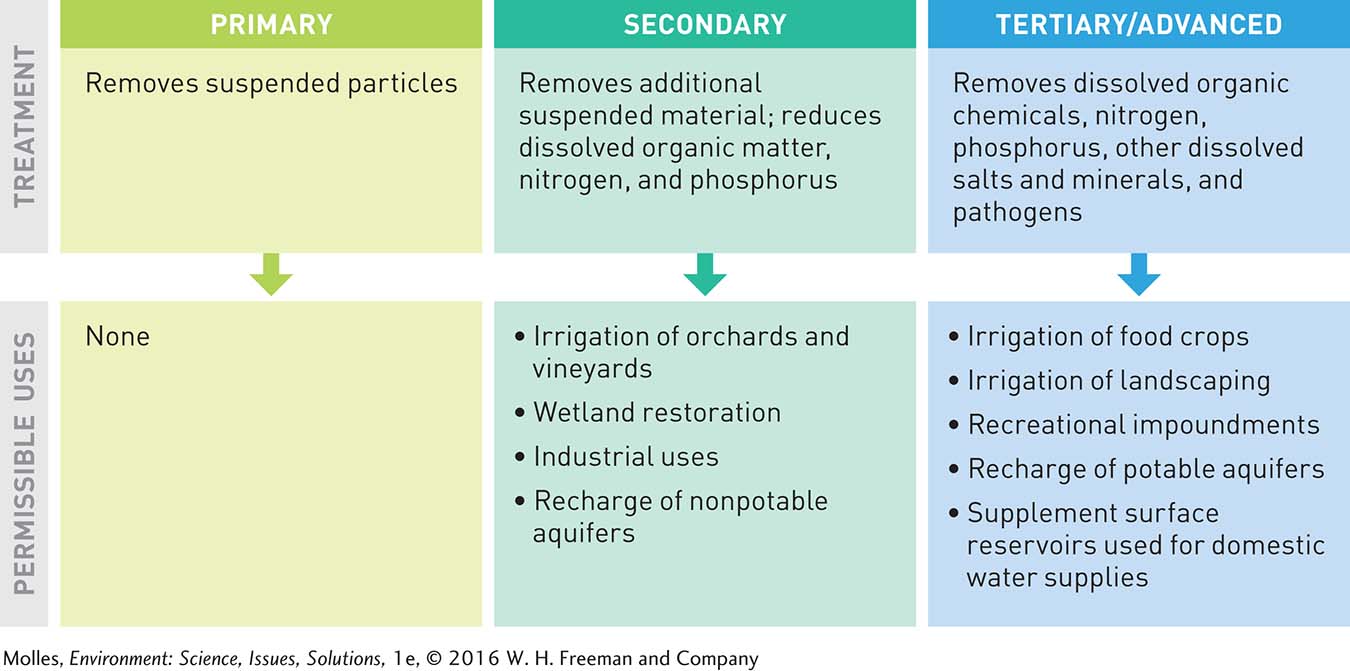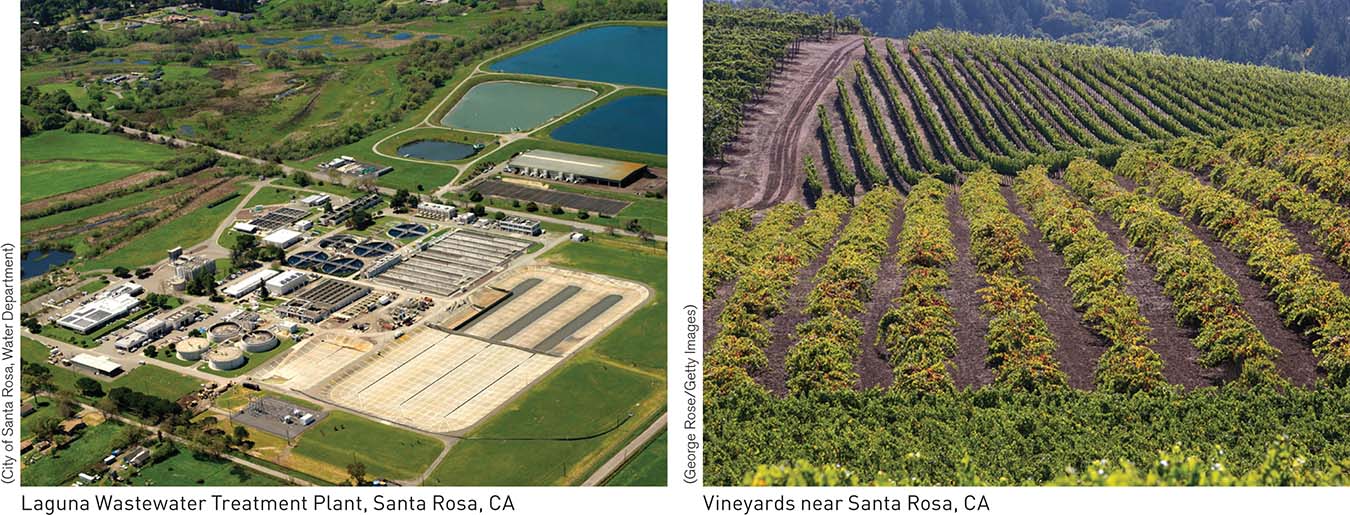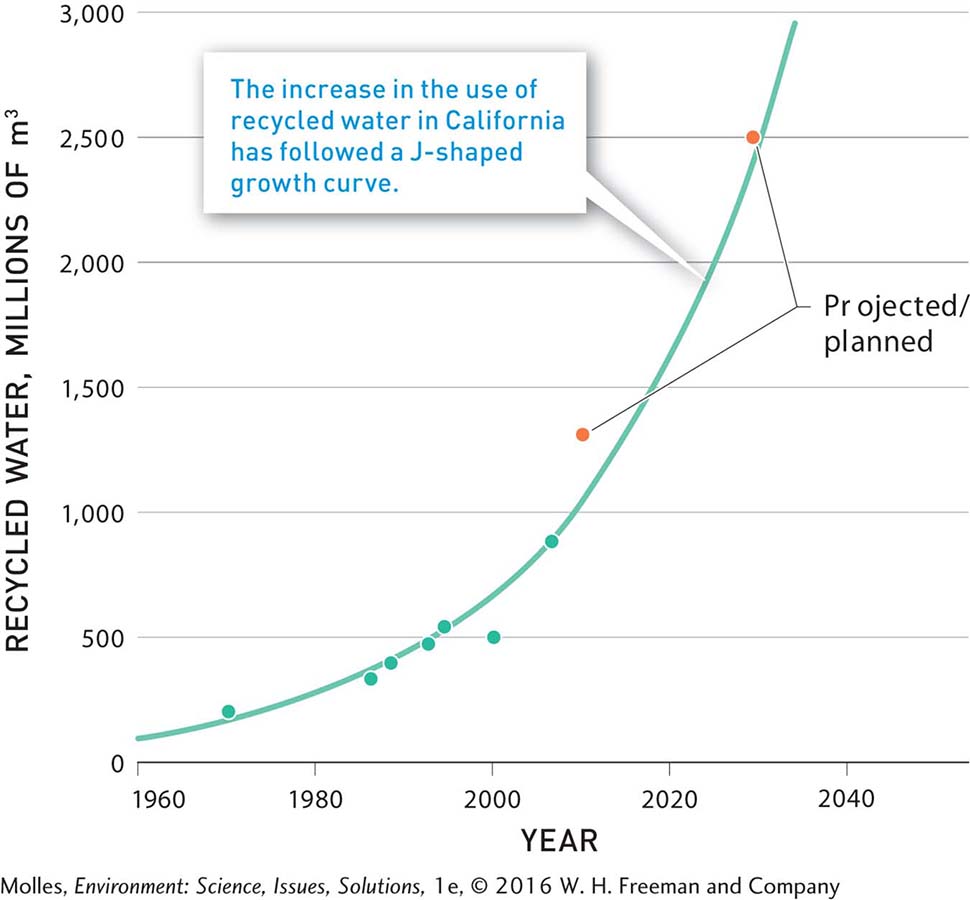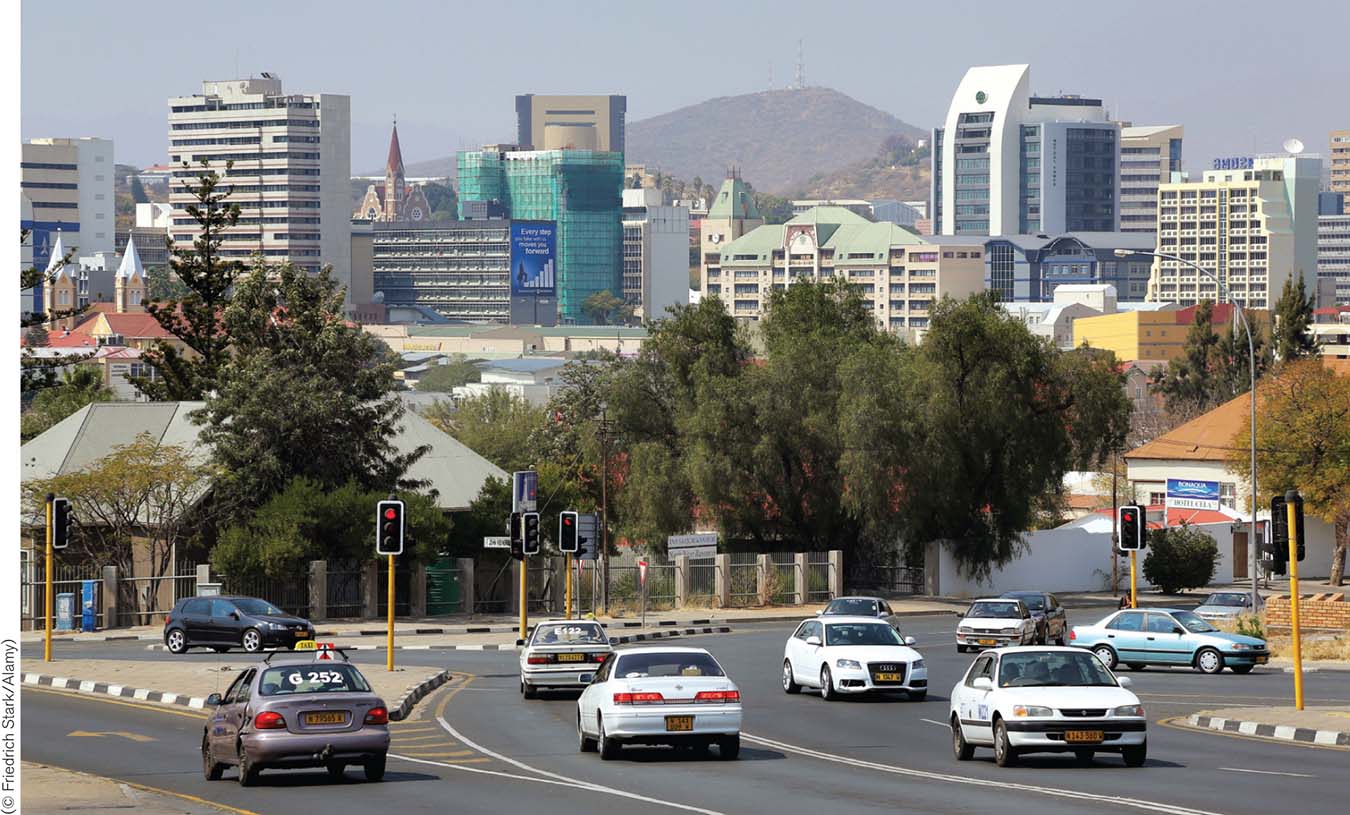6.8 Reclamation and recycling are saving water throughout the world
water recycling Using treated wastewater for beneficial purposes, including industrial processes, irrigation, recharging groundwater supplies, restoring wetlands and aquatic ecosystems, and augmenting drinking-
water reclamation Any process of treating wastewater to make it safe for reuse or recycling.
Every liter of water that is reused reduces the amount of water drawn from surface water or groundwater supplies. When communities practice water recycling, they substitute engineered treatment, or purification, of water for the processes that occur naturally during the hydrologic cycle. Treated wastewater can be used for a variety of purposes, including industrial processes, irrigation, recharging groundwater supplies, restoring wetland ecosystems, or even drinking water. In general, the process of treating wastewater to make it safe for reuse is called water reclamation. The more rigorous the treatment, the wider range of uses to which recycled water can be put (Figure 6.25).

Santa Rosa, California
Santa Rosa, California, is a city of 170,000, about an hour’s drive north of San Francisco and 50 kilometers (31 miles) inland from the Pacific Ocean. The heart of the Sonoma Wine Country, the region around Santa Rosa has a Mediterranean climate, with cool rainy winters and warm dry summers. During the dry summers in the area, the flows of rivers and streams around Santa Rosa drop to very low levels. Because environmental regulations do not permit Santa Rosa to discharge its wastewater into rivers at a volume of more than 1% of river flow, the city had to find another way to handle its wastewater in summer: recycling (Figure 6.26).

tertiary treatment
Advanced treatment of wastewater, which follows primary and secondary treatment, that removes dissolved organic chemicals, nitrogen, phosphorus, several other dissolved salts, and pathogens.
The Santa Rosa water reclamation facility provides tertiary treatment of its wastewater, including disinfecting the water by exposing it to ultraviolet light to kill any pathogens that it may contain. This reclaimed water, which is used for a variety of purposes, meets rigorous standards set by the California Department of Health for full contact with the human body, irrigation of food crops and landscaping, and consumption by livestock. Some of the water is used to irrigate 2,590 hectares (6,400 acres) of land, including pastures, vineyards, vegetable fields, and urban landscapes. During the moist winter months when irrigation is unnecessary, Santa Rosa discharges reclaimed water into a tributary to the nearby Russian River and into storage reservoirs.
176
In 2003 Santa Rosa began pumping water through a pipeline to the Geysers steam field for injection into steam wells to generate electricity from geothermal energy (see Figure 10.17, page 306). In 2008 nearly 50,000 m3 of recycled water was delivered each day to the Geysers steam field, enough to generate sufficient electricity to supply 100,000 households. The water recycling program in Santa Rosa is one of many in California, where the use of recycled water has grown rapidly (Figure 6.27).

Windhoek, Namibia
The country of Namibia occupies some of the driest regions of southwest Africa. Most of its territory lies within the Namib Desert, one of the most spectacular deserts on Earth (Figure 6.28). Because of its arid climate and perennial water shortages, Namibia has had to be innovative in its use of its limited freshwater supplies. The capital, Windhoek, was founded on a natural spring, but it is a rapidly growing city whose size has increased five-


When local water supplies started to dry up in the 1960s, Windhoek began to work seriously on plans for the sustainable management of its local water. The nearest abundant source of freshwater is the Okavango River, 650 kilometers (400 miles) north of the city. As an alternative to expensive, long-
177
Drinking treated wastewater sounds unappealing, but treated wastewater has long been released into rivers by one upstream city only to enter the drinking water supply of the next city downstream. For instance, wastewater from Dallas and Fort Worth, Texas, ends up in the Trinity River, which feeds Houston’s water supplies.
Industrial Water Reclamation
Worldwide, industrial water use exceeds that of municipalities (see Figure 6.8, page 164), suggesting significant opportunities for water reclamation and reuse by industries. In fact, many industries are doing just that, including the paper, textile, and food and beverage industries. Their primary goal is to save money, but an important by-
178
The liquid waste, however, is less desirable. It contains large concentrations of dissolved organic compounds, which is costly to treat on site or to dispose of through a waste treatment facility. Now, Cambrian Innovations has a method to convert this liquid into two components: methane gas and clean water. The gas can be burned for electricity. The water can be used to clean brewery equipment. The result is a savings of water, energy, and money. Similar opportunities for water reclamation and reuse are being exploited in many other industries.
Think About It
How are water-
recycling systems and the hydrologic cycle the same? How are they different? Reclaimed and recycled water in most places is mainly put to uses other than drinking, even where recycled water more than meets health standards and is superior in quality to other water sources. The reluctance to drink recycled water has been referred to as the “yuck factor.” To what do you attribute this resistance to drinking recycled water?
Relative to Question 2, how would you go about overcoming this resistance to drinking recycled water? How would you safeguard public health?